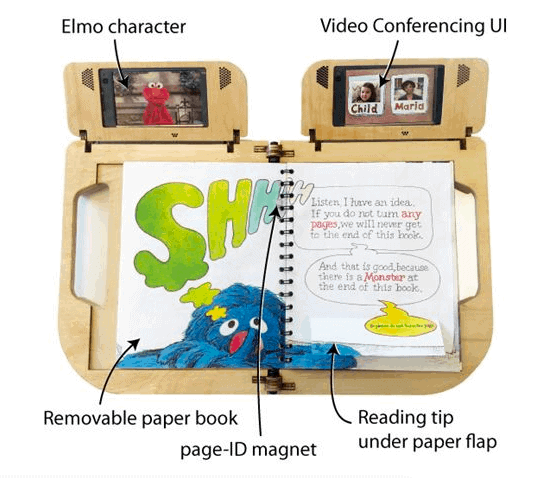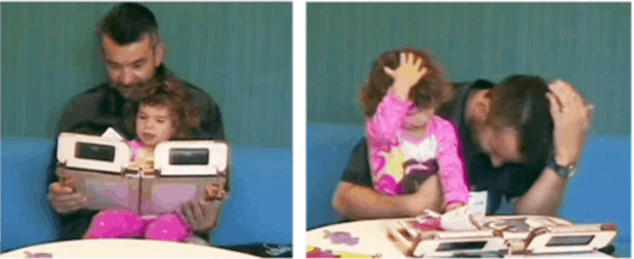Story Visit
Story Visit is a website where children and long-distance loved ones can read story books together. Story Visit combines video conferencing and connected story books: when a grown-up turns the page, the child’s page turns along with it. If the child points to something on his screen, the grown-up can see that on her screen too. Now families can read stories together even when they can’t be in the same place.
Our research showed that conversations with 3 year olds increased from several minutes (in a typical video call) to 15-20 minutes when they used Story Visit. Reading books together really is more fun!
![]()

